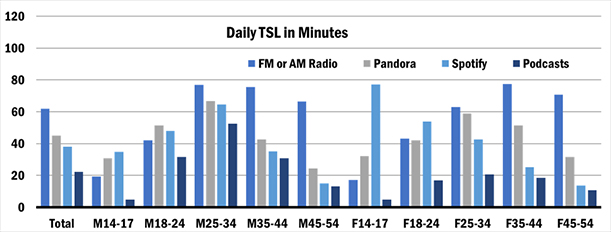-
NuVoodoo Media - Jul 5, 2017
July 5, 2017
Have an opinion? Add your comment below. Some industry types believe that these young people will eventually “age into” using Broadcast Radio. We’re not convinced that’s true.
-
Last week’s news that FCC General Counsel Brendan Carr is becoming an FCC Commissioner had us thinking back to our exercise of imagining what it would be like if Broadcast Radio was the technology being developed now and Wireless Internet was the legacy technology. If you talk to younger Millennials – or members of the next cohort, sometimes called “Generation Z” – you know that many of them don’t know very much about Broadcast Radio.
NuVoodoo Ratings Prospect Studies have shown the lower affinity and usage those under age 25 give Broadcast Radio. Some industry types believe that these young people will eventually “age into” using Broadcast Radio. We’re not convinced that’s true. Most of us began our love affair with radio back in our teen or preteen years. It was easy access to hit music; an early slice of pop culture to share with friends and the most readily-available way to take music in the car.

Maybe part of the youth disconnect with Broadcast Radio is the lower affinity they have for automobiles and driving? While teens in your family may be different, lower interest in driving among today’s teens is documented in a study from the University of Michigan. Broadcast Radio has an advantage in terms of dashboard placement and ease of use in many cars today, but a trip to an auto dealer or a ride in a new car will show you that advantage is slipping away. Plus, autonomous cars are only a few years away by the estimates of some, pointing to a future with in-car audiences who can do more than just listen.
When we’ve written about the emerging competition from online streaming audio over the past few years, Pandora has always been the first brand name mentioned. But, our data has shown the emergence of Spotify as the preferred brand among younger people (and we hear plenty about Pandora’s woes in the press today). Bottom line: the players may change, but things will never be the way they used to be.
If Spotify and its competitors were the incumbents and Broadcast was the insurgent, what would we do? We probably wouldn’t attack with music quantity, but we might attack with music quality. But, what would that be? It would involve more human interaction than comes with online streams:
- A station with music experts curating the music (but done smarter than when we tried that in the late 60's/early 70's on Progressive Rock stations).
- A station that celebrates the choices of the listeners (like Jelli and LDR, but with a human interface and enthusiastic hosts championing the listeners' picks).
- A national network with celebrity hosts and/or BIG-name guests dropping by.
- A station local or national, presented by hosts who are genuinely entertaining and interact with listeners on the phone and within the social space.
Or, you might not play music at all. You might:
- Become the audio outlet for a local TV news powerhouse or (dare we say it?) a local newspaper. As local TV adds more and more hours of news, having a 24-hour audio outlet would be accretive to their branding. All News does well in the markets where the high cost of entry makes sense. Partnering with a TV operation could make All News attractive in many other markets.
- Build more LOCAL talk stations. Stations like New Jersey 101.5 and WLW serve as models of talk radio that’s inviting, interesting and compelling to a wide spectrum of adults within their local markets.
- Bring "The View" and its TV competition to radio – local OR syndicated. Talk, where the topics hinge on values, ethics and morals; where listeners can get involved right away, because the topics are compelling and play to our sense of right and wrong.
Looking at any of these spoken-word options would cause you to confront the competition that radio faces from Podcasting – and we’ll delve more into that next week.
-
-

